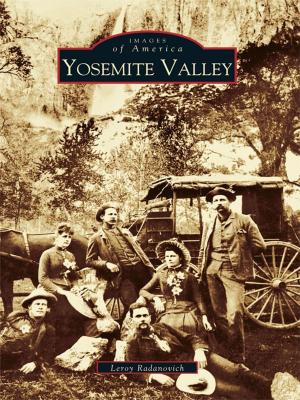San Ysidro and The Tijuana River Valley
Nonfiction, Travel, Pictorials, Art & Architecture, Photography, History| Author: | Barbara Zaragoza | ISBN: | 9781439645925 |
| Publisher: | Arcadia Publishing Inc. | Publication: | June 23, 2014 |
| Imprint: | Arcadia Publishing | Language: | English |
| Author: | Barbara Zaragoza |
| ISBN: | 9781439645925 |
| Publisher: | Arcadia Publishing Inc. |
| Publication: | June 23, 2014 |
| Imprint: | Arcadia Publishing |
| Language: | English |
In 1851, surveyors placed a marble obelisk on a mesa overlooking the Pacific Ocean, which demarcated the United States�Mexico boundary line. Tourists flocked to the region alongside land speculators who envisioned upscale hotels, resorts, and spas. Two decades later, an East Coast journalist, William Smythe, established a utopian agricultural colony in what is today San Ysidro. Tourists began to cross the border in droves when Tijuana earned the reputation as �vice city.� Racetrack, saloon, and gambling house employees settled in San Ysidro, while ranchers in the Tijuana River Valley bred horses for the racetracks. Dairy and vegetable farmers also moved in, taking advantage of the year-round mild weather. By the 1970s, suburban development and greater restrictions to the flow of people at the border meant the area became a predominantly Spanish-speaking community. The Port of Entry at San Ysidro also became the largest in the world, accommodating over 47 million people annually.
In 1851, surveyors placed a marble obelisk on a mesa overlooking the Pacific Ocean, which demarcated the United States�Mexico boundary line. Tourists flocked to the region alongside land speculators who envisioned upscale hotels, resorts, and spas. Two decades later, an East Coast journalist, William Smythe, established a utopian agricultural colony in what is today San Ysidro. Tourists began to cross the border in droves when Tijuana earned the reputation as �vice city.� Racetrack, saloon, and gambling house employees settled in San Ysidro, while ranchers in the Tijuana River Valley bred horses for the racetracks. Dairy and vegetable farmers also moved in, taking advantage of the year-round mild weather. By the 1970s, suburban development and greater restrictions to the flow of people at the border meant the area became a predominantly Spanish-speaking community. The Port of Entry at San Ysidro also became the largest in the world, accommodating over 47 million people annually.















